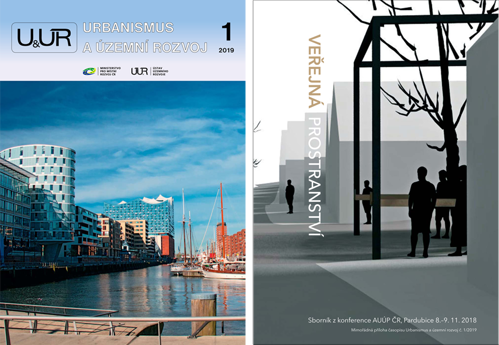
Administrative reaction of Czech cities to climate change adaptation, by Tereza Aubrechtová, Jan Geletič, Olga Halásová, Michal Lehnert, Petr Dobrovolný
The impact of climate change on urban systems is a topical matter for scientific research. The consequences of this impact are perceived sensitively by the public. In spite of this, adaptation measures are rather rare. This article is an analysis of the adaptation priorities of the cities of Brno, Ostrava, Pilsen and Olomouc, specifying their institutional limitations. Based on these, the state of the adaptation process today is described and its prospects are predicted. Data for the specification of adaptation limitations were taken from questionnaire surveys and round tables attended by officials from the participating cities. The results show that the main role in adaptation is played by greenery, although the climatic functions of this are not reflected. Other nature-related measures are rare. Limitations in the process of adaptation are not directly linked to the issue of climate change, tending to be related to problems of communication, fragmentation of the institutional environment and, first and foremost, a dearth of leadership or political will at the level of municipalities. Except for Brno, which is at the planning stage, all cities are newcomers in issues of adaptation to climate change.
An assessment methodology for gardening zones, by Jan Dostalík, Zbyněk Ulčák, Lucie Sovová, Lukáš Kala, Radoslava Krylová, Vojtěch Pelikán
Gardening areas are highly heterogenous territories which deliver both benefits and problems for towns and cities. Their practical assessment is usually based on subjective and selective criteria. The methodology of assessment of gardening locations presented in this article is one of a number of possible attitudes to the function and importance of these territories. It is a voluntary tool which standardises assessment and represents a very user-friendly procedure for evaluation of a wide range of these territories. Based on a multi-disciplinary approach, it evaluates territories from three perspectives. First, it observes urban gardening in the framework of spatial planning in urban areas. Second, social benefits of gardening communities and economic aspects of urban gardening (gardens as heterodoxous economic space), including contribution to foodstuffs security, are analysed. The third viewpoint studies environmental aspects of gardening locations and preconditions for the support of biodiversity.
Planning tools for greenery management and the benefi ts of urban greenery, by Pavel Šimek
Greenery management in Czech towns and cities uses standardised tools for the information administration of greenery share. This article deals with possible use of these tools for approximate specification of regulatory services in areas of urban greenery and their quantification as related to the character of input data. Undoubtedly, the specification of regulatory services is important for argumentation in favour of maintaining specific locations in an undeveloped state. Also, it is applicable for the procurement of investment and assessment of development proposals. The results have been verified using the model location of Primál, a pond in the town of Modřice.
Public line infrastructure in spatial planning, by Martin Tunka
Coordination and placement of public line infrastructure in territories is an important matter for spatial planning. Moreover, its spatial preparation has become acute because of the possibility of drawing finance from European funds for projects of public interest. On top of that, interest in accelerated construction of public line infrastructure was one reason for the amendment to Building Act 225/2017, which made it possible for building authorities to take decisions on line infrastructure. This process used to be reserved for municipal building offices only, but from 1 January 2018 obligatory statements have also been published by spatial planning offices and Regional Offices. This article is based on knowledge of current practice in the courts.
Waterways in the context of Central European settlements, by Milan Körner
This article is focused on inland shipping transportation using both navigable rivers and navigation channels. Germany and Poland are the only Central European countries with coastlines; Switzerland, Austria, the Czech Republic, Slovakia and Hungary are landlocked, in up-river and central stretches of big rivers. This situation is clearly reflected in the share of shipping in total transportation volumes. Railway and, subsequently, road infrastructure for passenger transport were built as much larger networks. Velocity and reliability have always been important factors in transportation. This article is a complement to earlier articles on railway, road and air transportation.
Deficiencies of the transportation infrastructure in the Czech Republic and its neighbouring countries, by Milan Körner
Territories are materially linked by various means of transport, from bicycles to airplanes. They need devices and routes that make transport possible. This is transport infrastructure in a nutshell. Walking does not require any means of transport. Air transportation takes place in controlled corridors, as does sea and ocean shipping. The subject of this text is the current state of things and plans for the transportation infrastructure in the Czech Republic and, with reference to existing and ever-increasing links, Central European countries. As a consequence of the increase in population and its activities and needs, requirements for transportation connections — i.e requirements for capacity and quality (speed in particular) to which the infrastrucure should react — are on the increase as well.